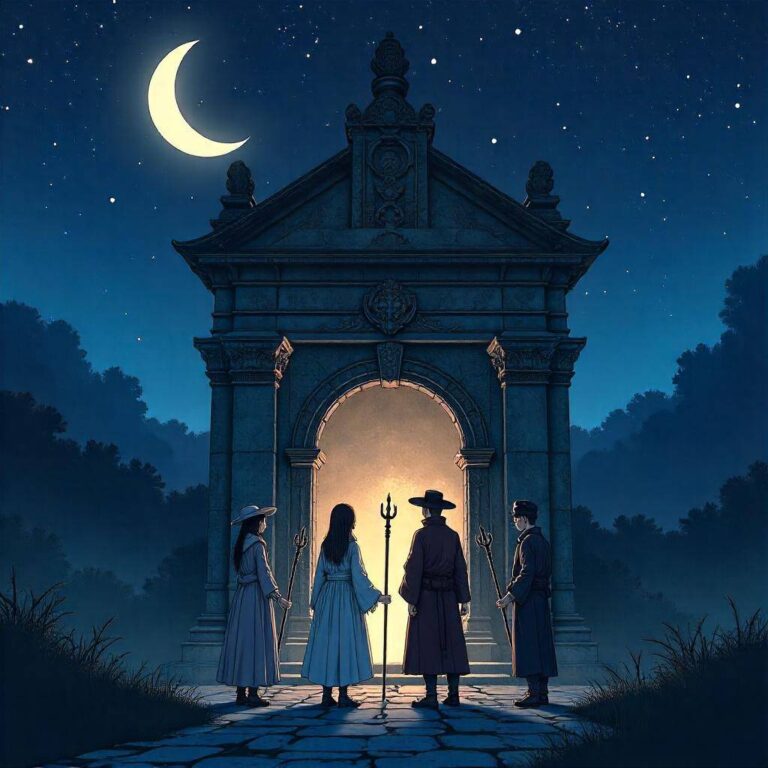Reader’s Question:
What is the story of “Higurashi: When They Cry” about?
Exploring the Twisted World of “Higurashi: When They Cry”
Ah, “Higurashi: When They Cry”—where do I even begin with this mind-bending rollercoaster of a series? If you’re looking for a light-hearted anime to wind down after a long day, uh,
this isn’t it. But if you’re up for a wild ride through the dark corners of rural Japan, complete with a hefty dose of psychological horror and mystery, then buckle up!
A Slice of Life That Takes a Turn
At first glance, “Higurashi” seems like your typical slice-of-life anime. You’ve got a quaint little village named Hinamizawa, where the sun shines, the river flows, and a group of kids—think classic anime tropes—spend their days enjoying school, festivals, and endless games. I mean, who wouldn’t want to live in a place like that? But just when you’re settling into this picture-perfect existence, the series pulls the rug out from under you. I remember watching the first few episodes, thinking, “This is cute! Look at these kids having fun!” But then, BOOM! The idyllic setting starts to warp, and suddenly you’re questioning everything. It’s like taking a leisurely stroll in the park and then stumbling into a horror movie.
The Unraveling of Secrets
As the story progresses, the cheerful innocence of the village disintegrates, exposing layers of dark secrets and brutal violence. Each arc of the series feels like a puzzle piece, slowly revealing the terrifying truth about the village and its residents. People you thought you knew turn out to be multidimensional—some harboring deep-rooted traumas and others hiding sinister motives. I found myself gasping at the twists; it was like watching a train wreck unfold in slow motion. You can’t look away, but you also want to cover your eyes! One of the standout elements is the time loop aspect of the narrative. It’s fascinating! The cycle of events repeats itself, but each time, you get a new perspective. You might think, “Okay, this character is going to make a different choice this time,” and then—surprise!—they don’t. It’s this pervasive sense of dread that keeps you glued to the screen, wondering how it’s all going to end. And the fact that one character retains their memories through these loops adds a unique layer of suspense. It’s like they’re stuck in a twisted game of déjà vu, desperately trying to change their fate.
A Psychological Journey
“Higurashi” isn’t just about the horror; it dives deep into psychological themes that resonate on many levels. The exploration of trust, betrayal, and the fragility of sanity is mind-blowing. How much do we really know about the people around us? This series challenges that notion every step of the way. It’s not just about surviving the horror; it’s about understanding what leads to such horrific events in the first place. I have to admit, there were moments when I had to take a break from watching. The tension built up to this unbearable level, and I found myself needing to step away and process what I’d just seen. I’d sit there with a cup of tea, staring blankly at the wall, thinking about the implications of each character’s actions. It’s one of those shows that lingers in your mind long after the credits roll—like a haunting melody you can’t shake off.
Character Depth and Development
Now, let’s talk characters—oh boy, where do I begin? Each one is intricately crafted, with personalities that feel as real as your next-door neighbor (you know, the one you avoid eye contact with). You start to form attachments, rooting for them to find a way out of this bitter cycle of violence. But then, just when you think you know someone, you get hit with a revelation that shakes your understanding to its core. I particularly loved how the series takes its time to develop these characters. It’s not just about shock value; it’s about the slow unravelling of their stories and relationships. You can’t help but feel empathy for them, even when they’re doing things you’d never condone. It’s a testament to how well the show captures the complexity of human emotions—love, fear, joy, and despair, all wrapped in a bow of horrific circumstances.
Animation and Soundtrack
Let’s not forget the animation and soundtrack, which play a crucial role in setting the tone. The contrast between the cute character designs and the horrific events is striking. You might find yourself chuckling at a funny moment, only to be jolted back to reality by a sudden, violent twist. The soundtrack enhances this experience, with eerie melodies that linger in the background, making your heart race. There are times I caught myself humming the opening theme, only to remember the dark undertones of the story. It’s a bizarre juxtaposition that I found fascinating. The music really captures the essence of the show, blending folk elements with haunting notes that whisper of the impending doom waiting just around the corner.
Final Thoughts
So, would I recommend “Higurashi: When They Cry”? Absolutely! But I’d caution you to approach it with an open mind and a strong stomach. It’s a series that forces you to confront uncomfortable truths about human nature, all while keeping you on the edge of your seat. I’ve thought about my own experiences in rural settings, where the facade of peace can sometimes mask deeper issues. “Higurashi” does a brilliant job of illustrating how reality often contrasts sharply with appearances, leaving viewers with a sense of unease that lingers long after the final episode. Bottom line: if you’re ready to journey through a chilling, meticulously crafted narrative that will keep you guessing, dive into “Higurashi: When They Cry.” Just don’t say I didn’t warn you about the dark twists lurking around every corner!



